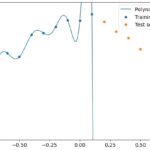
Data visualization is one of the most fascinating fields in Data Science. Sometimes, using a good plot or graphical representation can make us better understand the information hidden inside data. How can we do it with more than 2 dimensions?
As long as we work with two-dimensional datasets, a simple scatterplot can be quite useful to visualize patterns and events. If we work with three-dimensional data there’s still some chance to visualize something using 3d plots.
But what happens if we want to visualize higher-dimensional datasets? Things can become more difficult. Think about clustering problems. It would be very wonderful if we could visualize data in many dimensions in order to check whether there are some patterns or not.
Of course, we don’t have a multidimensional vision, so we must transform multidimensional data into 2d data. An algorithm able to do it is MDS.
What is MDS?
MDS (multidimensional scaling) is an algorithm that transforms a dataset into another dataset, usually with lower dimensions, keeping the same euclidean distances between the points.
Keeping the distances is a very useful feature of MDS because it allows us to reasonably preserve patterns and clusters if, for example, we want to perform K-Means or other types of clustering.
So, for example, if we have a 4-dimensional dataset and want to visualize it, we can use MDS to scale it in 2 dimensions. The distances between points are kept as in the original dataset, so if data self-organizes in clusters, they can be visible even after the scaling procedure.
Of course, the coordinates of the new points in the lower dimension no longer have business value and are dimensionless. Value is carried by the shape of the scatterplot and by the relative distances between points.
It’s worth mentioning that a dataset should be normalized or standardized before giving it to MDS. That’s very similar to what we do with K-Means clustering, for example. The reason is very simple: we don’t want to give more weight to some features only because their order of magnitude is higher than others’. A simple 0–1 normalization will solve this problem effectively.
In Python, there’s a nice implementation in MDS under the module manifold of the package sklearn. Let’s see an example using the famous Iris dataset.
An example in Python
We’re going to visualize the 4 features of the Iris dataset using MDS to scale them in 2 dimensions. First, we’ll perform a 0–1 scaling of the features, then we’ll perform MDS in 2 dimensions and plot the new data, giving each point a different color according to the target variable of the Iris dataset.
Let’s start importing some libraries.
import numpy as np
from sklearn.datasets import load_iris
import matplotlib.pyplot as plt
from sklearn.manifold import MDS
from sklearn.preprocessing import MinMaxScalerNow, let’s load the Iris dataset.
data = load_iris()
X = data.dataWe can now perform a 0–1 scaling with MinMaxScaler
scaler = MinMaxScaler()
X_scaled = scaler.fit_transform(X)Then, we apply the MDS procedure to get a 2-dimensional dataset. The random_state is set in order to make every plot reproducible.
mds = MDS(2,random_state=0)
X_2d = mds.fit_transform(X_scaled)Finally, we can plot the new dataset.
colors = ['red','green','blue']plt.rcParams['figure.figsize'] = [7, 7]
plt.rc('font', size=14)for i in np.unique(data.target):
subset = X_2d[data.target == i]
x = [row[0] for row in subset]
y = [row[1] for row in subset] plt.scatter(x,y,c=colors[i],label=data.target_names[i])plt.legend()
plt.show()And here’s the result.

As you can see, “setosa” points are very distant from the other points and create a cluster by themselves. This insight couldn’t be achieved easily without plotting data this way.
Conclusions
Visualizing multidimensional data with MDS can be very useful in many applications. It can be used to detect outliers in some multivariate distribution, for example. Think about predictive maintenance, where you have some devices whose behavior drifts away from the other ones. Another useful use case is clustering. Before using K-Means or DBSCAN, it can be useful to see if the data self organizes in clusters. If the dataset is not too large, the MDS calculation can be very easy and quick. Otherwise, cloud architecture can be a useful tool to speed up the computation.
References
[1] Multidimensional scaling. Wikipedia. https://en.wikipedia.org/wiki/Multidimensional_scaling




1
ChicoParty.com